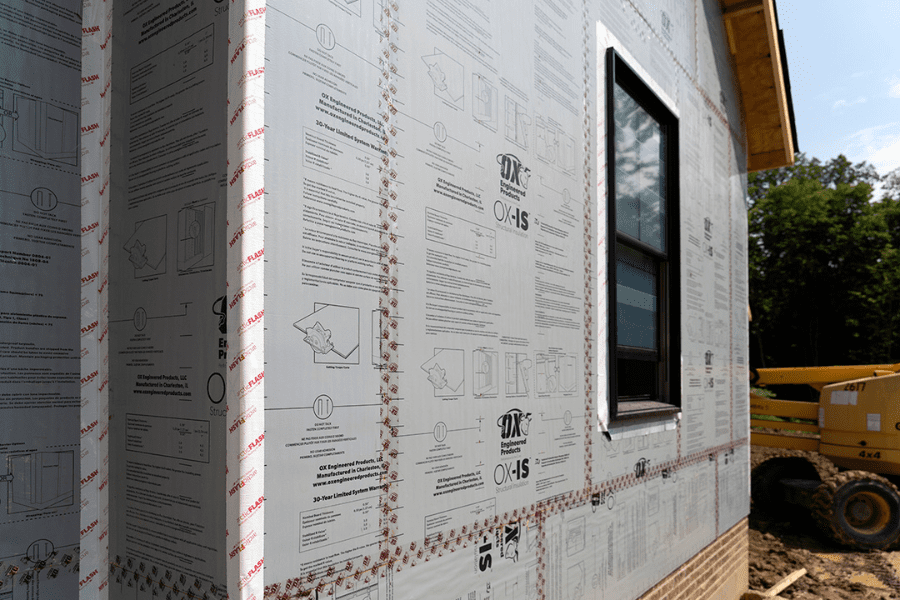Feb 26, 2024
The Healthy Home Trend: The Rise of Home Performance Testing
Terms like house wellness and IAQ have been gaining traction, but the buzzword to watch for is home performance.
By: Russell Pope

Millennials are a notoriously conscious bunch. Health-conscious, eco-conscious, socially conscious. Able to instantly research product claims, dissect media stories and diagnose medical conditions the way only those born a digital native can.
And now they are entering the home market.
Many are concerned about indoor air quality (66% according to an Eco Pulse report), most think energy-efficient homes are healthier homes (not necessarily) and arguably all of them want building materials and solutions that won’t make them sick.
In part three of our Healthy Home Pro series, we explore the future of high performance homes, and how construction professionals plan to cater to the next generation of tech savvy, hyper-aware homeowners.
Healthy homes will soon be the price of entry
The Millennial generation is expected to outnumber Boomers by next year. Shrewd builders, architects and other home professionals are already shifting their business strategy to serve the needs of this huge contingent of future homeowners.“ In the next 15 years, we are going to see a jump in the number of people wanting a healthy living environment,” predicts Kelly Nemergut, partner at N2 Architecture. “There’s more knowledge out there, and the younger generations are more aware. They will do their own education, make sure they do what’s best for their bodies, eliminating products that could make them sick. For tomorrow’s consumers, a healthy home will be the price of entry,” she declares.
Tech for control – and convenience
Home pros say it starts with a smartphone. People don’t want to get up to turn on the fan or adjust the thermostat, and they want to know that doors are locked when they leave for the day. A smartphone or any other technology that can help people monitor and control their house is important to consider.
This technology includes sensors, automatic timers, smart features and mobile apps with remote controls. Already, Internet of Things (IoT) and voice technology is being incorporated into many home systems, enabling individuals to control and customize their environment with even greater ease. Concerned the timer on the bathroom ventilation fan didn’t turn on, check it on the phone.
A recent study on disruptive technology by Panasonic shows that many companies have made investments in mobile devices, apps and commerce as well as the cloud, and three in five have adopted IoT. Senior tech decision makers believe these three technologies are most critical to their future success.

Home performance testing: the proof is in the data
Terms like house wellness and IAQ have been gaining traction, but the buzzword to watch for is home performance. Once, the term only applied to energy efficiency, but there’s a new crop of home improvement specialists that are using technology – and the data gleaned from it – to assess a home’s health and make sure the residence “works well as a whole.”
Home performance pros can come in and test air quality, moisture, air flow pressure and heat flow to see where inefficiencies exist. Clients are presented with actual scientific results in addition to solution recommendations, so they know where in their home to spend their money and time, and can measure how much improvement was made.
Industry experts predict a proliferation of health-conscious homeowners opting to have a home monitoring system installed, complete with a maintenance agreement where a service pro comes several times a year to make sure the roof isn’t leaking, air quality is optimal, and filters are working. With data in hand, building experts might recommend improvements like an energy recovery ventilator, which replaces unwanted, stale air with an optimal supply of fresh, clean air, leading to balanced air pressure (and good IAQ) in the home. Advanced ERVs feature smart flow technology, which automatically speeds up the fan when it senses static pressure, increasing its ability to expel humidity, airborne mold, and other air pollutants from any room.
From blower door, duct tightness and exhaust fan flow tests to infrared thermal scans of enclosures, savvy contractors are already using home performance testing to prove – with hard data – that their work is better than the competition. Test results also enable contractors to guarantee their work for a very long time.
The number one goal of home performance, according to one specialist, is to give clients control of their environment and predict what’s going to happen, from how their basement will feel next winter to how much how carbon monoxide their babies are going to be breathing five years down the road.
Smart systems to meet custom needs
The IoT promises to bring custom solutions, which will greatly benefit the varied needs of the next generation of homeowners. Consider ventilation: there is less demand for fresh air delivery rate in a home that is occupied by a working couple with no children who rarely cook when compared to a family of six with a stay-at-home parent, homeschooled children and daily meals cooked in the kitchen. The smart systems of the future will monitor the options and provide the best Indoor Air Quality solution based upon these specific needs, plus all of the variables that come into play.




